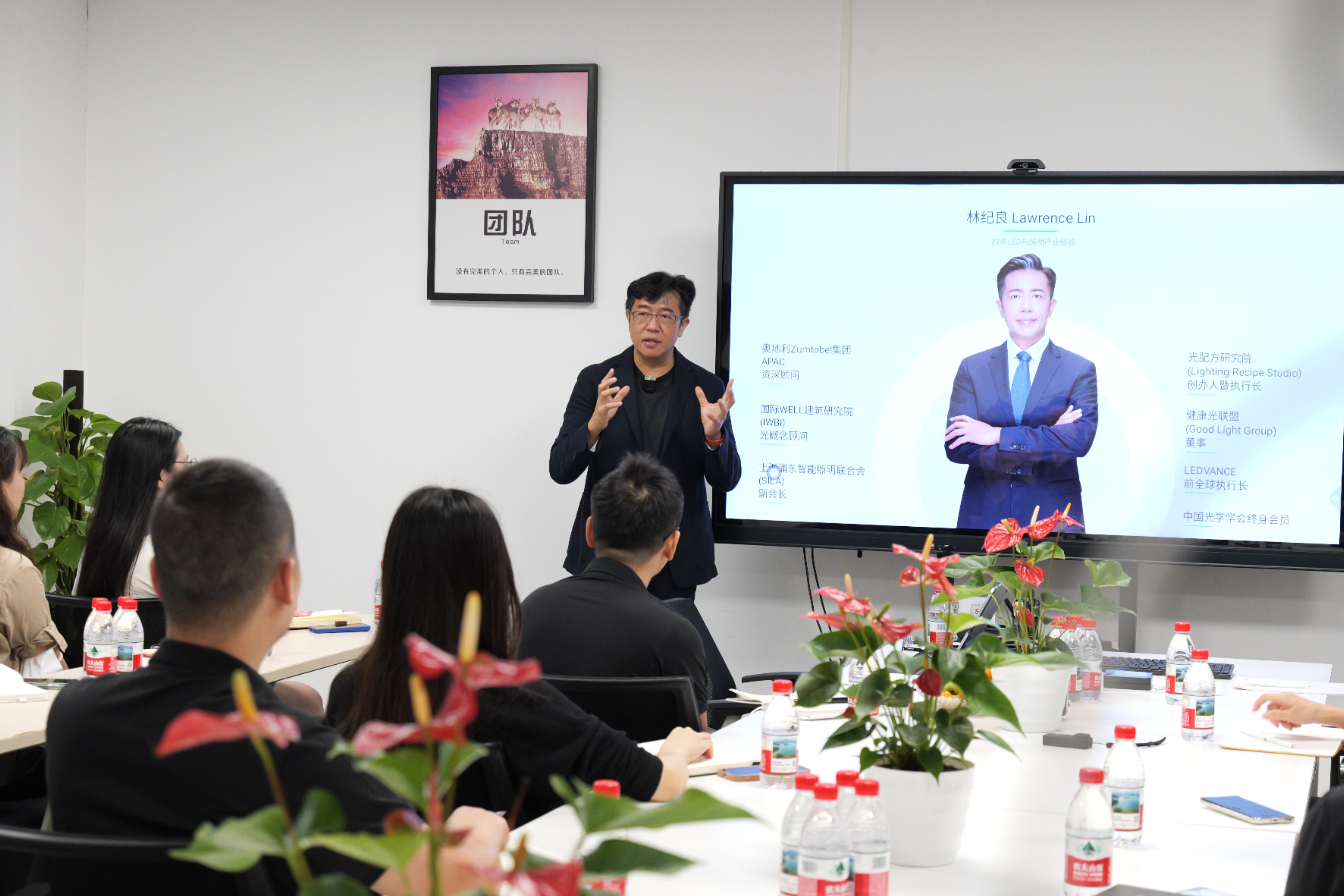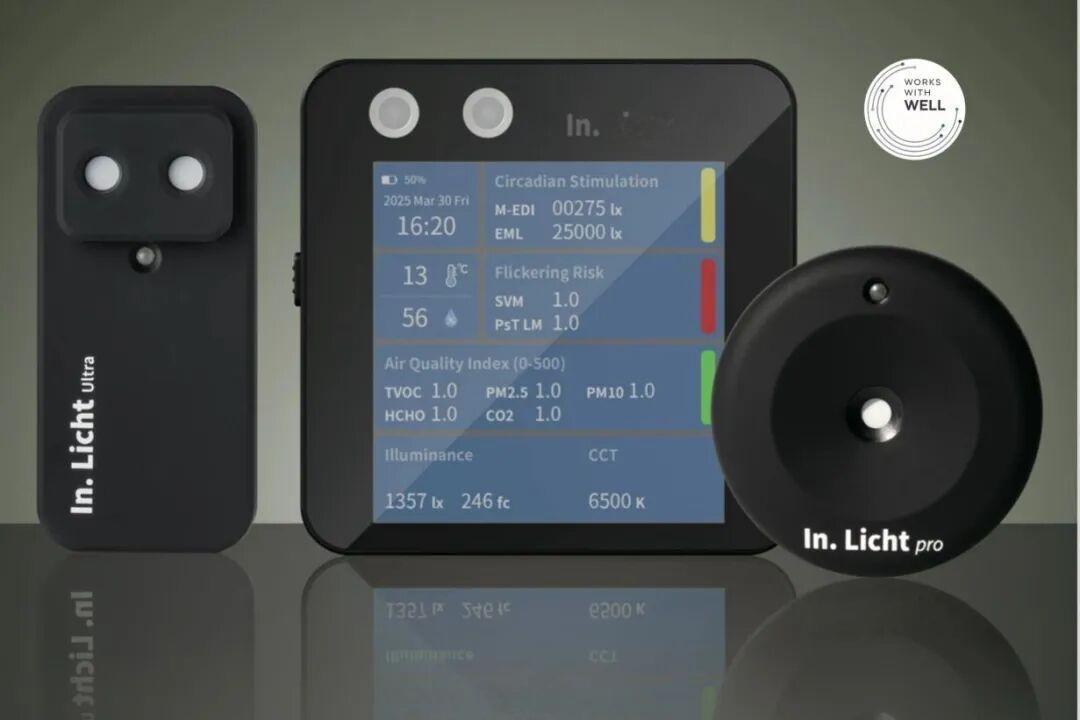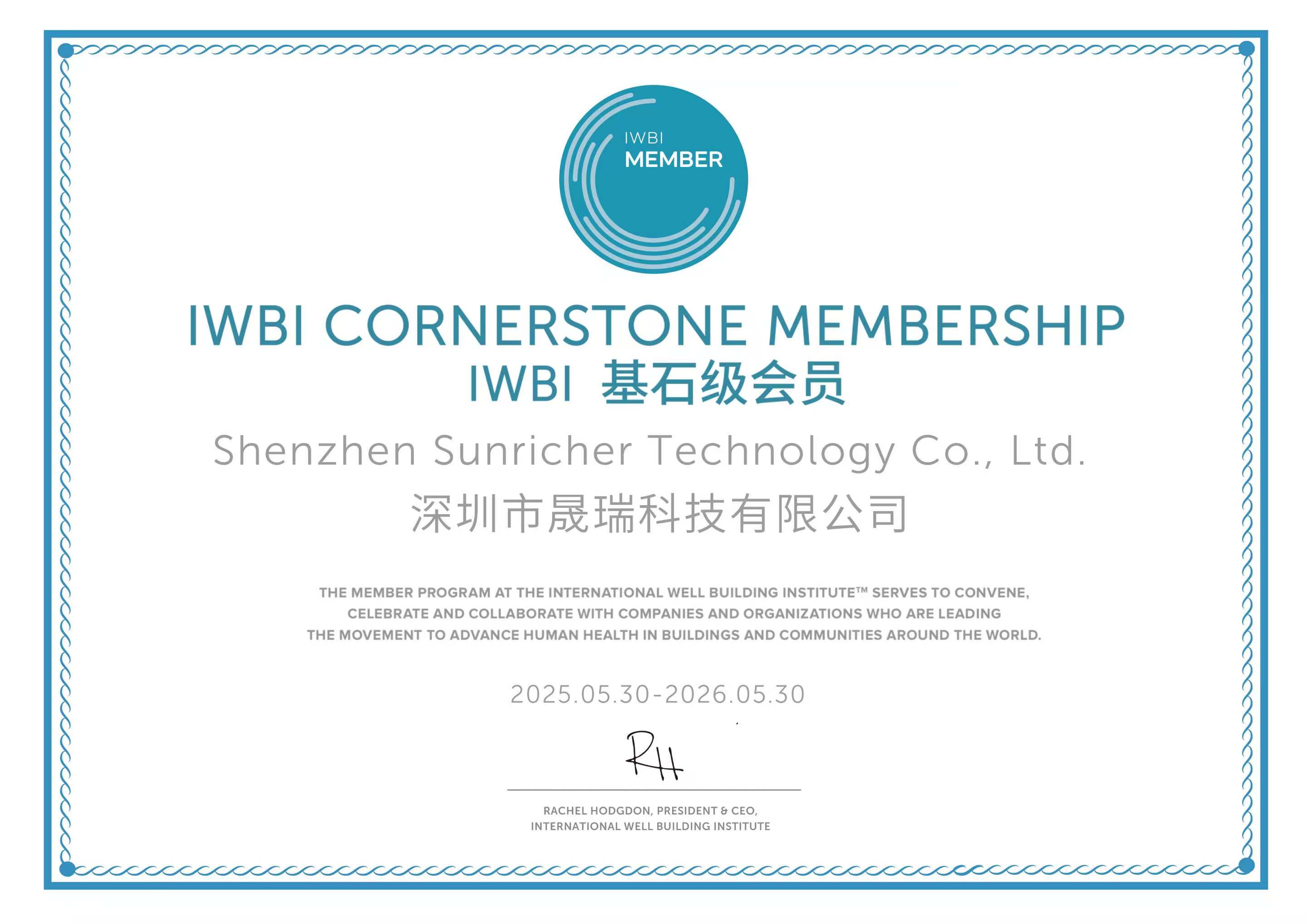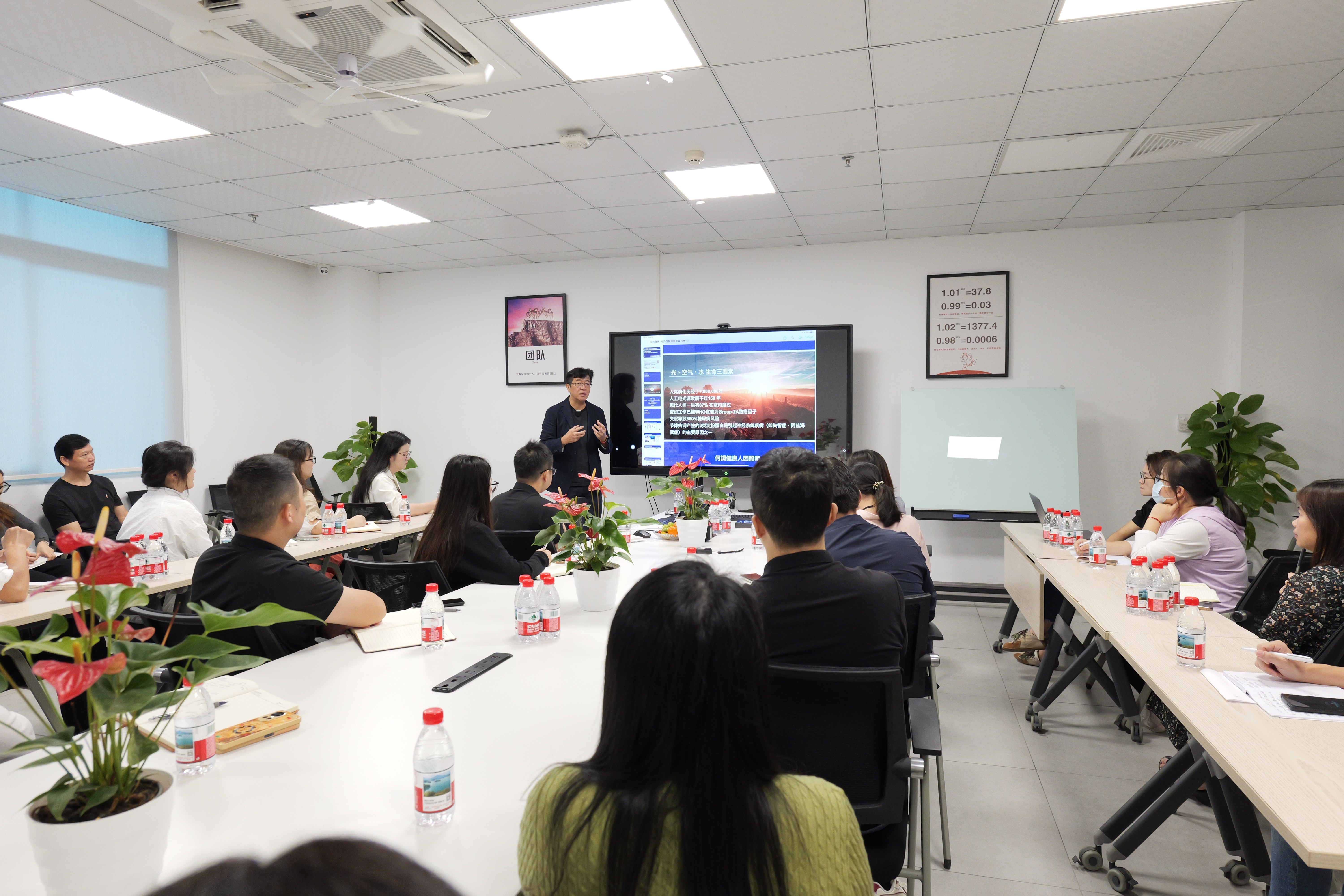Dialogue with Lighting Expert Lawrence Lin: Illuminating a Healthier Future with Scientific Light Recipes
2025-11-10 上午09:50:00
On November 7, 2025, Sunricher successfully hosted a Healthy Lighting Exchange Seminar, featuring Mr. Lawrence Lin, Founder & CEO of Lighting Recipe Studio (In.Licht®), Senior Advisor at Zumtobel APAC, IWBI Light Concept Advisor, and Board Member of the Good Light Group.
With 28 years of experience in the LED and lighting industries, Mr. Lin shared his deep insights into the revolutionary shift from visual lighting to healthy lighting, revealing how light science profoundly affects human circadian rhythm, emotion, and cognitive performance.

The Dual Effects of Light: The Scientific Core of Healthy Lighting
Healthy lighting, as Mr. Lin explained, is founded on understanding both visual and non-visual effects of light. Beyond the familiar rods and cones that enable sight, intrinsically photosensitive retinal ganglion cells (ipRGCs) play a critical role in regulating non-visual responses such as hormone secretion, sleep patterns, and overall well-being.
“Light has evolved from mere decoration to a catalyst for health, an emotional regulator, and a driver of productivity,” Mr. Lin emphasized.
He referenced the 2017 Nobel Prize in Physiology or Medicine, which confirmed the biological mechanism of circadian rhythm controlled by cortisol and melatonin. Disrupting this rhythm increases the risks of cancer, diabetes, and dementia — leading the World Health Organization to classify night-shift work as a probable carcinogen (Group 2A).

Rebuilding the Human–Light Relationship with Scientific Light Recipes
Building on solid scientific principles, Mr. Lin noted that healthy lighting should fulfill three essential needs — health, sustainability, and productivity — while also delivering emotional value.
He emphasized a design framework based on four dimensions: human, space, time, and activity, advocating adaptive lighting strategies for different age groups and use scenarios. For instance, elderly users require up to three times the illuminance of younger adults, while infants benefit from high-intensity but indirect lighting environments.
He also provided quantitative guidelines using m-EDI (melanopic Equivalent Daylight Illuminance):
-
Daytime: ≥250 m-EDI, high illuminance, high CCT, elevated light position
-
Evening: <50 m-EDI
-
Nighttime: <1 m-EDI with low brightness, warm CCT, and low-positioned lighting to protect melatonin secretion
From Standards to Technology Empowerment
Healthy lighting implementation depends on both scientific standards and technological support. Mr. Lin highlighted that lighting design should follow a clear hierarchy: national/international safety and energy standards → circadian rhythm design → scene-based adaptation → emotional enhancement, aligning with the IWBI WELL Building Standard and its nine Light Concept principles.
He introduced the In.Licht® professional instruments, including In.Licht Pro, In.Licht Well, and In.Licht Ultra Spectrum/WELL Meter, which support WELL certification by generating EML-based reports for both visual and circadian lighting validation. These tools also enable real-time light environment monitoring, ensuring continuous WELL compliance and simplifying re-certification processes.

A Shared Vision for Healthy Light
As an IWBI Cornerstone Member, Sunricher has joined the global leadership circle in healthy building development. This membership reflects Sunricher’s active role in promoting healthy lighting standards and contributing to the evolution of global lighting regulations.

This seminar provided valuable inspiration for Sunricher’s ongoing strategic layout in the healthy lighting field.
As Mr. Lin concluded: “We are no longer just illuminating spaces — we are shaping life experiences through light.”
Moving forward, Sunricher will continue to collaborate with industry experts and partners to integrate intelligent technology with lighting health science, creating lighting environments that are healthier, more efficient, and more enjoyable for all.









